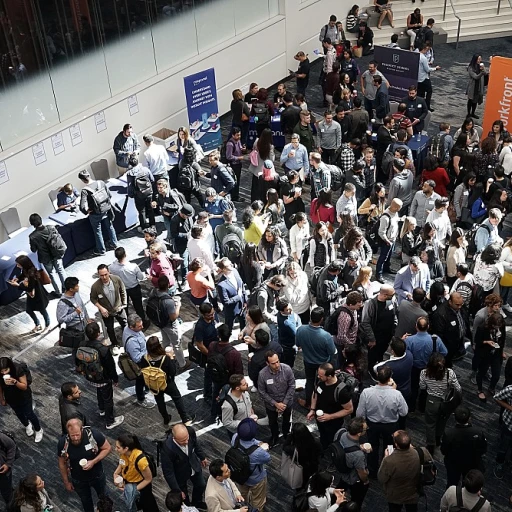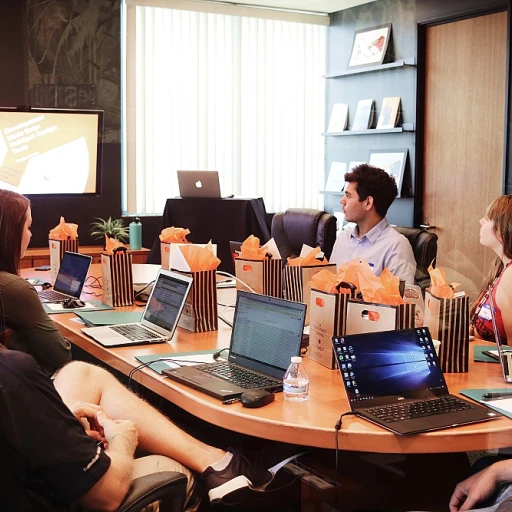Defining a Lateral Transfer
Exploring Internal Mobility through Lateral Transfers
Understanding the dynamics of a lateral transfer begins with a clear definition of what it entails. Unlike a promotion that often involves an upward mobility in terms of hierarchy and pay grade, a lateral transfer allows an employee to move from one role to another within the same level or similar position across different departments. This means, while the job title and the basic salary may remain constant, the job duties, team, and overall environment could vary, offering a fresh perspective and unique challenges.
Lateral transfers serve as a strategic tool both for employees looking to diversify their skill set and for organizations aiming to utilize talent more effectively. Employees might seek these opportunities to tap into new career advancement paths when the direct upward mobility is limited. This move enables them to enhance their development and career by gaining insights into new functions and broadening their skill base.
From an organizational standpoint, lateral transfers are significant for robust succession planning and minimizing recruitment costs. They allow companies to retain their top talent by providing them with varied experiences and opportunities rather than lose them to other organizations. Additionally, internal mobility contributes to smoother workforce transitions, as the employees are already familiar with the company culture and ecosystem.
To delve deeper into the possibilities that come with job transfers, consider exploring employment opportunities at companies in Mesa, where lateral moves are routinely practiced to foster talent growth and retention.
Exploring Employment Opportunities in Mesa is a resource worth exploring for those contemplating a lateral move.
Benefits of Lateral Transfers
Gaining Valuable Experience and Skills
A lateral transfer can offer numerous advantages for employees seeking to expand their skill set and diversify their experience. By moving across different roles or departments within the same organization, employees gain exposure to a wider range of job duties and operational areas. This broadens their capabilities and often helps in identifying new areas of interest or talent. The opportunity to learn new skills without the pressure of a competitive recruitment process is another appealing benefit of lateral moves.
Enhanced Career Development Opportunities
Lateral transfers provide employees with pathways for career advancement beyond the traditional upward progression. By switching roles within a company, employees may enjoy increased visibility and demonstrate their adaptability, thus positioning themselves well for future opportunities. This form of internal mobility encourages development and succession planning efforts, making it an effective tool for organizations to retain and groom top talent.
Diversifying Work Experience
Employees engaging in lateral moves often experience a renewed sense of purpose and motivation. Taking on new positions with different teams can lead to refreshing challenges and motivation, rejuvenating their drive and productivity. By navigating through various roles, employees can develop a rich tapestry of experiences, which often fosters a more holistic understanding of the organization’s operations and strategies.
For those interested in exploring more on enhancing employee experience through such dynamic changes,
this resource offers a deeper dive into these strategies.
Expanding Professional Networks
Lateral transfers inherently involve interacting with new colleagues and leaders, which helps employees widen their professional networks within the organization. These relationships can be crucial for personal and professional growth. Building connections across different levels aids in sharing insights and opens doors to collaborative opportunities that might not have been possible within a single role.
Overall, lateral transfers are more than just a change in job position; they are a vehicle for personal growth, recognition, and continued learning, ensuring long-term career fulfillment and satisfaction.
Challenges of Lateral Transfers
Navigating the Complexities of Moving Laterally
Lateral transfers can sometimes pose challenges that are unique compared to upward mobility or promotions. Understanding these challenges is crucial for both employees contemplating the move and for organizations facilitating these transfers.
Lateral job transfers involve a shift in job duties and responsibilities without necessarily moving to a higher pay grade. This requirement for adaptation puts employees in a position where they need to quickly learn new skills or further develop their existing competencies to align with their new role. The pressure to perform and demonstrate value in the new position can be daunting, especially if the transfer requires a move to a different team or department with distinct dynamics and culture.
Another challenge in lateral transfers is managing expectations around career advancement. While these transfers provide opportunities for personal growth and broadening of skills, they might sometimes be perceived as stagnation if not clearly communicated as part of career development strategies. This can impact employee morale and their perceived value within the organization.
Furthermore, the smooth transition of a transfer employee can be hindered by inadequate planning or support from the recruitment or HR teams. Unlike moving to higher positions, which might come with structured induction training, lateral moves often demand more self-navigation and adaptability from the employees themselves.
Despite these challenges, it's important for organizations to aid in facilitating these transitions effectively. Offering ample support, such as mentoring or gradual handover of duties, can help employees adjust without feeling overwhelmed. Additionally, ensuring clear communication about the potential career benefits and future opportunities that can arise from lateral transfers can enhance the overall employee experience.
For organizations to make these transitions a beneficial experience, they should not only focus on succession planning but also recognize when talent needs more engaging tasks at work. Encouraging internal mobility and lateral movements within the workforce not only leverages talent development but also fosters a vibrant and resilient organizational structure. For more insights into identifying engaging tasks for employees, you might want to read
a related article.
Impact on Employee Experience
Influence on the Workforce Experience Journey
Lateral transfers can dramatically shape the employee experience, often playing a pivotal role in enhancing job satisfaction and overall career growth. When effectively executed, these transitions can foster a renewed sense of purpose, allowing employees to explore different job duties within the same organization, thus enriching their skill set and broadening their horizon.
Employees participating in a lateral move may experience increased engagement. This happens as they are often required to learn and adapt to new roles and environments, fostering a sense of challenge and achievement. The process, though demanding, can be quite rewarding as it facilitates career advancement without necessarily climbing the traditional hierarchical ladder.
One significant aspect to consider is the potential boost in employee morale. Allowing a lateral transfer can be seen as a display of trust in an employee's talent and capabilities, promoting a culture of internal mobility and nurturing a free flow of skills across different teams and departments.
However, the impact on the employee experience isn't always positive. If not properly facilitated, these changes can lead to feelings of instability and uncertainty, potentially resulting in stress or disengagement. This is why transparent communication and providing adequate support during the transition period are paramount to ensure a smooth journey.
Ultimately, when managed well, lateral transfers can be in line with succession planning efforts, preparing individuals for future opportunities and contributing to a dynamic and adaptable workforce.
Strategies for Successful Lateral Transfers
Ensuring Smooth Transitions and Embracing Opportunities
In a world where internal mobility is increasingly becoming a strategic imperative, executing a successful lateral transfer can mean the difference between a seamless employee move and a stalled career trajectory. It’s essential for organizations to strategize effectively to support their workforce in transition. Here are some key strategies that can help enhance the employee experience during a lateral job change:
- Clear Communication: Initiating a lateral move should start with transparent discussions about why the transfer is happening and what both the employee and the organization stand to gain. This builds trust and sets the stage for a positive experience.
- Skill Alignment and Development: Before approving a transfer lateral request, it's crucial to assess whether the employee’s current skills align with the new role's requirements. Identifying training opportunities can help bridge any skills gaps and benefit the employee in their new position.
- Mentorship and Support: Pairing employees with a mentor from their new team can greatly aid in adjusting to new job duties and environments. Mentorship facilitates knowledge transfer and ensures the employee isn’t navigating the change alone.
- Recognition of Pay and Benefits Lateral Adjustments: Although lateral moves often occur without a change in pay grade, any changes related to benefits should be communicated clearly. Understanding these elements can have a substantial effect on the employee’s future outlook and satisfaction.
- Role Clarity: Outlining expectations and responsibilities in the new job helps reduce ambiguity. Employees should have a clear understanding of what success looks like in their new roles, which encourages confidence and performance.
- Feedback Mechanisms: Regular check-ins to discuss the employee’s progress, challenges, and satisfaction in their new role provide a platform for constructive feedback. This supports continuous improvement and engagement.
By thoughtfully planning and executing lateral transfers, organizations not only facilitate seamless transitions but also foster an environment where employees feel supported in their career advancement. These moves can cultivate future opportunities and open doors for upward mobility, enriching the overall employee experience.
Real-Life Examples and Case Studies
Exploring Real-Life Scenarios and Lessons Learned
Engaging with real-life examples of lateral transfers can provide valuable insights into the dynamics and outcomes of such moves within organizations. Businesses often opt for lateral transfers as a method to fill skill gaps, retain talent, and efficiently manage succession planning, all while promoting internal mobility. These examples underscore the potential benefits but also reflect the common challenges addressed elsewhere in our discussion.
A prominent case is within the tech industry, where a major company streamlined its workforce by encouraging lateral moves. Employees in technical roles were given opportunities to transfer laterally into project management positions. This allowed roles to be filled quickly, without the lengthy process of external recruitment, and fostered career advancement through developing cross-functional skills.
In another instance, a retail giant successfully implemented a program that emphasized career development through lateral job transfers. The initiative allowed employees to request lateral moves across different store locations, not only to explore new job duties but also as a strategy for personal growth and upward mobility. As a result, employee satisfaction and retention improved as workers felt they had more control over their job path and were able to enhance their experience and skills in various areas.
A multinational manufacturing company conducted an internal survey to gauge employee interest in lateral transfers as a way to enhance job satisfaction and reduce turnover. By identifying team-level dynamics and offering targeted opportunities for lateral job transfers, they noted a perceptible increase in employee engagement. This positive result illustrates how well-executed transfer policies can effectively contribute to an enriching employee experience.
While these examples highlight the advantages of leveraging lateral transfers for talent development and retention, they also bring to light the inherent challenges. Each case required careful consideration to ensure that employees’ new roles matched their existing skills and that there was a smooth transition process in place.
Organizations that utilize lessons learned from these examples can navigate the complexities of lateral transfers more effectively, fostering environments where employees can grow and thrive. This strategy not only supports individual career aspirations but also strengthens the overall workforce by promoting versatile capabilities and future opportunities for growth.














